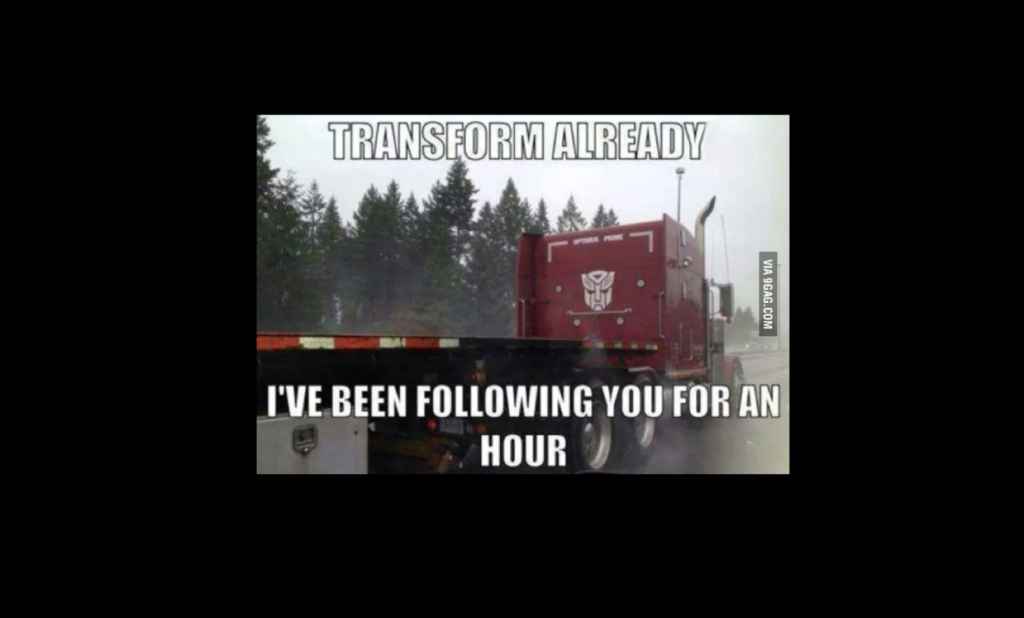This past year, I met with hundreds of senior executives across the globe for the sole purpose of getting in some high-quality practice reps—working on our path to emotional mastery together. In many geographies, in many languages, in many world-class companies from many industries, we came together to strengthen our innovation mindsets and muscles so that we can accelerate getting to our individual and collective next levels as world-class Jedi business leaders focused on playing the long game.

These leaders are wrestling with the fast pace of change, asking questions like: What does our next-level business environment look like 10 years from now? What kind of company will we need to be to compete in 2030? Who do I need to BE/BECOME to help lead my company to get there successfully? Will my “current-level” thinking and behaving be enough?
Some sessions were private one-on-ones, some were in learning groups, and more often than not we met in the weekly course of business, during work stream meetings, KPI review sessions, M&A integration planning sessions or weekly team meetings. We met so that we could engage in real-time, “learn by doing,” high-quality practice reps.
KNOWING VS. DOING INCONGRUENCE
We were working mostly on experimenting how to make progress on closing our knowing versus doing gaps. We were not trying to focus on all of them, just the one or two that matter most to us right now.

Many senior executives can clearly articulate what their personal leadership gap is (e.g., “I’m a poor listener,” “I don’t ask enough questions,” “I typically react aggressively,” “I display passive-defensive reactivity,” “I am known for my technical abilities, not for developing trust/relationships,” “I don’t overtly walk the talk when it comes to our company culture or company values, but I run the No. 1 sales region, so I think I make up for it that way”). They’ve heard plenty of consistent feedback over the years from their bosses, peers and their 360s. All of them claim to have good intentions about closing those gaps.
Unfortunately, though, many are NOT very intentional about doing the personal work needed to actually close the gaps. They are all sincere (THE GOOD NEWS), but not all serious about it (THE BAD NEWS). Many executives are instead operating out of a default modus operandi, merely working on mitigating the impact of their gaps (after the fact), setting up damage control and disaster recovery/cleanup protocol versus upgrading their ability to deliver their desired next-level performance on the front end.
I know this because I privately asked them some very direct questions like: “You said you’re working on neutralizing your tendency to bully people in meetings (and instead engage them in a way that leaves them feeling strong), but you just talked over three people in the meeting we just had. Did you notice that? How exactly have you been working on closing this leadership gap?”
When they replied that they didn’t actually have a plan or a protocol for practice, I asked, “Why not? Why haven’t you asked for help?” They didn’t have a reason. They usually seemed surprised by the question and obviousness of what I was implying—that they knew what to do but weren’t doing it. When I ask them the follow-up question, it usually sinks in… “So, who are you BEING now that you know what to do and yet are still choosing not to do it?”

I challenge them to first reflect and get clarity—get specific about what different results they want (but are having trouble getting with their current-level approach), get specific about the WHY or the motive for wanting it and then get some expert help to experiment on “getting there” (closing the gap FASTER) by practicing differently. The treatment is simple: deliberate practice, an experimentation lifestyle, test and learn.
“THE JEDI PADAWAN ON THE PATH TO MASTERY” looks and sounds like this: “I’m getting expert help (sometimes challenging + sometimes loving support); I have an explicit/tangible performance goal; I’m engaged in consistent, deliberate/expert practice (mostly with others); I’m seeking out consistent/ objective feedback (testing, learning, game filming); I’m focused on learning to love the process of learning (and sharing that learning with my team).”
THE #1 MISTAKE (SMART) PEOPLE MAKE THAT KEEPS THEM STUCK
I need the same kind of challenge, support, reminder, clarity and awakening to help me be more congruent with my walk/talk. Only then can I determine if I am indeed on the path to mastery (overcoming the gap) or if I am making the all-too-common “dabbling/hacking” (approach to learning) mistake.
“THE DABBLER/HACKER DEFAULTING TO PLAN A” looks and sounds like this: “I’m working on it (mostly on my own); I’m trying harder (when I have time) to not be so reactive, but I’m too busy right now to stop and train; I need more self-discipline to train consistently; I know what needs to be done, I just can’t do it in the moment; I think faster than most people; and, yes, I can get pretty impatient frequently—that’s why people think I’m mad and yelling at them…but I’m not mad, I’m just passionate and moving fast.”
The “dabbler/hacker” orientation does NOT support effective follow-through on closing the gap. The dabbler/hacker orientation is apparently satisfied at the current level of performance. If they were consciously dissatisfied or suffering enough at the current level, they would approach closing the gap differently. That usually is the telltale sign that we aren’t ready to change, yet. When will we be ready? Don’t worry…there will always be more suffering. When we are done suffering, that’s when we will be ready to change. With that new level of awareness, openness and curiosity, we will be ready to experiment with a new expert approach and a new expert system to find ways to close the gaps more effectively. Then, and usually only then, we can see past the DOING gap and get to work on the root cause: the BEING gap.
Yes, there is an expert way to accelerate our own readiness. Just trying harder doesn’t work.
In some cases, the awareness will come too late and the unnecessary suffering will lead to permanent damage. In some cases, the stakes are too high to allow suffering and permanent damage. Even then, unfortunately, we often approach these kinds of high stakes domains that we say we care about (e.g., taking care of others and taking care of ourselves) so unconsciously that a game film replay of our lives would show us that sometimes we pursue the less effective “dabbler/hacker” approach, even when it matters most.
None of us would say that it is OK to be a “dabbler/hacker” when it comes to our important relationships, right? Is it OK to approach our health with this “dabbler/hacker” orientation? Is it OK to approach our leadership development with this “dabbler/hacker” orientation?
Is it ok (for world-class professional leaders) to approach our leadership development with this “dabbler/hacker” orientation?
Of course not. There’s too much riding on it. There are too many people counting on us to BE a “next-level” leader already, and maybe we’re behind schedule. Taking a mastery approach in the leadership domain will have an exponential impact on all of the results we get, in all of the dimensions we care about most (e.g., career, physical, mental, emotional, relational, spiritual).
BECOMING THE KIND OF LEADER WHO LEARNS TO LEAD DIFFERENTLY
To succeed in a time of building agile/adaptive businesses, the most effective leaders are UN-LEARNING the outdated, top-down, “leader-knows-best” success formula and are instead LEARNING to hold themselves 100% responsible for the fate of the company on one hand…and on the other hand hold 0% (absolutely no) responsibility for controlling the choices that need to be made by other people. Let’s read that again…
We leaders are 100% responsible for the fate of the company on one hand…and on the other hand, we assume 0% (absolutely NO) responsibility for controlling the choices that need to be made by other people.
This key leadership polarity may seem counterintuitive, but it is more effective when it comes to exceptional, sustainable results. Successful leaders today design and grow cultures where diverse groups of human beings can bring 100% of their individuality, creativity, courage and curiosity to bear on the most complex problems of the times, and cultures and systems where there can be leaders at all levels making better, faster, more collaborative decisions. That’s how you “fit in here.” You speak up, ask for help, test, learn, make mistakes, etc.
We can’t fake that kind of next level leadership. That’s a BEING fix, not a DOING fix. Who we are (BEING) determines what gets traction at the DOING level and then ultimately determines the results we get. That’s why New Year’s resolutions don’t usually work; they are approached from the DOING level.
A DECADE FROM NOW…
I hope 10 years from now I will become the kind of leader that is capable of BEING more conscious and deliberate than I am right now. I’m much further ahead of where I was a decade ago, but I still have a long, long way to go.
I didn’t start the deeper work on my BEING level until I became a parent. I wish I had started much sooner. But that’s when I started to get more serious about waking up and choosing to focus on becoming something better. I finally saw the glaring dissatisfaction I had with my current level and realized WHY I wanted to become a better version of myself. That’s when I started engaging in the mastery of next-level practices and eventually started seeing the next-level results.
WHERE WILL MASTERY MATTER MOST TO YOU IN THE NEXT 10 YEARS?
What are you focused on learning? What do you want to experiment on in 2020? Let’s get specific. Let’s celebrate noticing our gaps. Let’s build our 2020 plan. “The question we all need to think about is when and where to play a long-term game. A good place to start is with things that compound: knowledge, relationships, and finances.” –FS
This post is an invitation to myself and others to notice where we might be taking the dabbler/hacker approach versus the necessary mastery approach. Use this list of reflection-provoking planning questions below. Modify them, make them your own, or use a different list of questions to capture your thinking for an increased likelihood of BEING successful in 2020. Once you have this clarity, then you can more effectively plan your weekly sprints (experiments) and quarterly goals.
2019 CURRENT YEAR/CURRENT-LEVEL REFLECTION
POSITIVE:
• What did I love most about 2019? When was I happiest?
• What am I most grateful for from 2019?
• Which three moments were most meaningful?
AUTHENTIC/PURPOSEFUL:
• Where did I really use my strengths?
• How did I live out my values/purpose?
DISAPPOINTMENTS/LEARNINGS:
• What were my biggest disappointments? …frustrations? …failures?
• What were my biggest inconsistencies with my values/purpose/priorities?
• What still makes me feel angry? …sad? …anxious? …scared?
• What is the most honest thing I can say about my disappointments?
• What is the most compassionate thing I could say to myself about my disappointments? (reframing)
MOMENTUM
• What momentum did I start to build in 2019 that I want to take forward?
2020 NEXT YEAR/NEXT-LEVEL PLANNING
• What do I love to do that I want to do more of in 2020?
• What core values are most inspiring to me?
• What priorities do I want to focus on in 2020?
• What would be most inspiring for me to accomplish in 2020?
• What would be my heart’s desire or biggest dream?
Click here for access to the downloadable PDF or email me at raff.viton@axialent.com if you would like a PDF of the full 2019 REFLECTION/2020 PLANNING DOCUMENT.


















